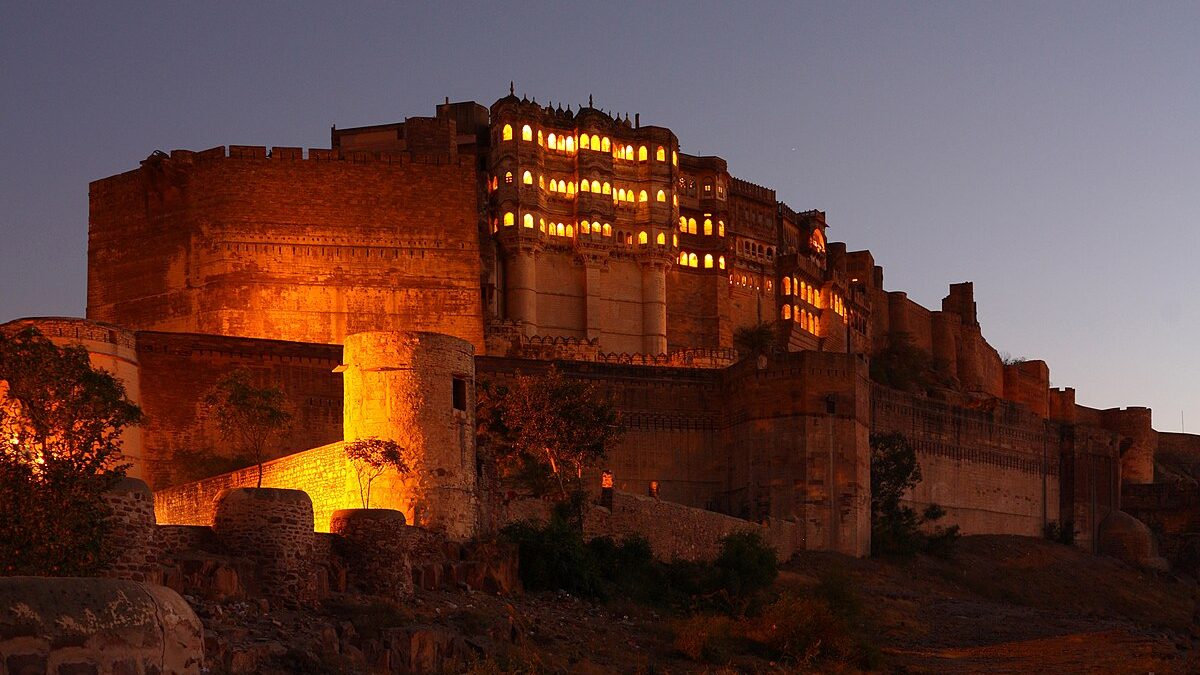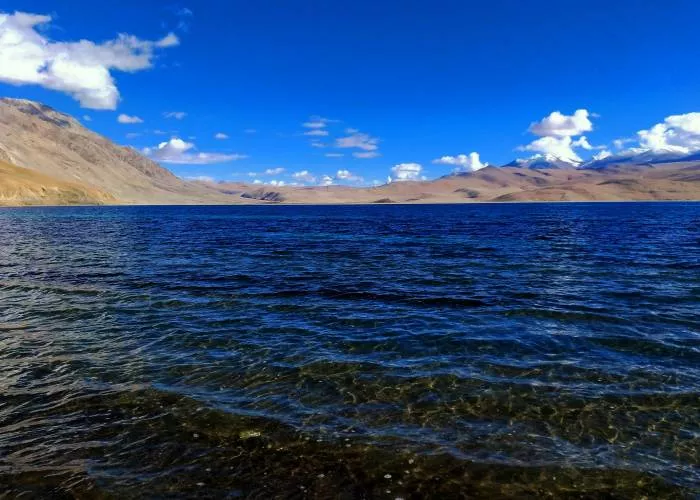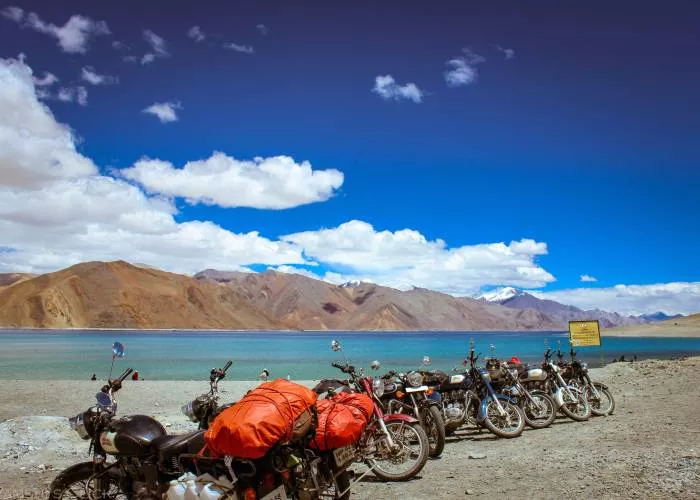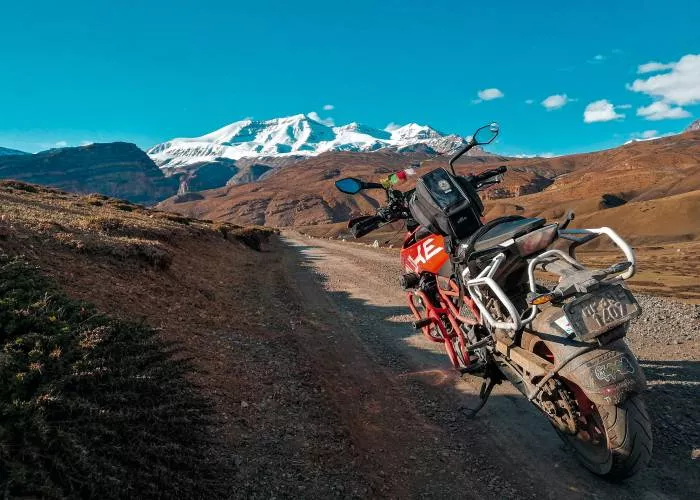Key Monastery in Spiti Valley

About Key Monastery in Spiti Valley
The magnificent Key Monastery, also known as Kye Gompa, is one of spiti valley‘s most popular attractions, drawing visitors from all walks of life. This is one place in spiti valley that almost everyone who comes this way visits. Its close proximity to Kaza town makes it very simple to plan a trip here. It is the largest monastery in Spiti Valley and is also known as the Ki, Kye, or Kee Monastery. So here we will explore about Key Monastery Spiti.
About Key Monastery
The Ki Monastery is located in the Spiti Valley, or the land in the middle. Located high in the Himalayas, Spiti Valley lies in the state of Himachal Pradesh, India. The name “Spiti” means “The middle land”, i.e. the land between Tibet and India. Where the geographic conditions of the land are described as the cold desert mountain valley.
The exact year of key gompa (key monastery) founding is still unknown. Although it is believed to originally date back to 1100 CE, still many believe the site is even older. The earliest structures of the monastery which was built by the monks were much lower than the now majestic Kee Monastery. This Buddhist training ground appears to be a ramshackle temple of mysticism straight out of a fantasy novel, but it is the result of long battle history with Mongol hordes.
History of Key Monastery
Dromtön (Brom-ston, 1008-1064 CE), a pupil of the famous teacher Atisha, is said to have founded Key Gompa in the 11th century. This appears to be connected with the now-demolished Kadampa monastery at the village of Rangrik. This nearby village is believed to be destroyed in the 14th century when the Sakya sect rose to power with Mongol assistance.
Kye was attacked again by the Mongols during the timeline of the 5th Dalai Lama and became a Gelugpa establishment. During the wars between Ladakh and Kullu in 1830, it was sacked once more. The Dogra army led by Ghulam Khan and Rahim Khan severely damaged it in 1841.
Later that year, it was attacked again by Sikhs. And then in the 1840s, the monastery was damaged by fire and also survived a violent earthquake in 1975. It is the Archaeological Survey of India and the State Public Works Department joint effort that the monastery still seems unaffected by these calamities.
Collections at Key Monastery
The entire structure has three floors and is a historian’s dream. The Key Monastery Spiti has a large collection of treasures, the first of which is mostly underground and used for storage. Tangyur, one of the rooms, is richly painted with murals. The Assembly Hall and cells for many monks are located on the ground floor. This monastery houses valuable manuscripts, Thangkas, beautiful murals, stucco images, and unusual wind instruments. Lamas still use these wind instruments during Key Monastery’s annual summer festival.
Another incredible collection inside the monastery is of weapons. Possibly used to defend the monastery from barbarian attacks by invaders. Inside the monastery, several murals, including images and idols of Buddha, as well as numerous books of high aesthetic value and historical documents pertaining to the orders, are on display.
You can also visit the prayer rooms, which are accessible via dimly lit and difficult passages with entrance through tiny doors. All of these rooms are unique and do not share a common design. One of the most memorable things you can do while visiting the monastery is to observe the Lamas, who can be seen singing and dancing and playing with their pipes and horns.
Highlights of Key Monastery
The Cham Festival is a well-known festival to attend at the Ki Monastery. Also known as the Mask Dance, Cham Dance is influenced by Tibetan Buddhism. The Cham dancers are followed by a grand procession of Lamas dressed in vibrant attire and performing traditional dances, which take place every year in June or July. The masked dances take place in the ritual ground beneath the monastery.
This annual event takes place in June or July. The cham’s leader is usually a musician who keeps time with percussion instruments such as cymbals. A grand procession of Lamas dressed in vibrant red and blue masks performing traditional dances follows the Cham dancers. The masked dances take place beneath the monastery on the ritual ground.
During the event, a large butter sculpture of a demon is burned as part of the celebration to symbolize the triumph of good over evil. Devotees from neighboring villages who have come to attend the festival lay down on the ground, and the Lamas walk over them. Through this practice, the Lamas, who are considered deities, assisted pilgrims in ridding themselves of any disease or spirit possession. Chams are a type of meditation and an offering to the gods.
Tips for visiting Key Monastery
– Preferably traveling on a bus or hiring a private taxi from Manali to Kaza would be a smarter and safer move.
– Since the sighting of ATMs is not so frequent, it’s always better to carry a manageable amount of cash when traveling to Key Monastery.
– The key monastery stay comes with a reasonable price of INR 250, which covers your meal as well.
– Get yourself refreshed with the herbal butter tea, locally known as ‘Po Cha’. It is made from churning tea, salt, and Yak butter which enhances the circulation of oxygen in the body.
– Make sure you have sufficient attire and additional equipment to keep you warm in the chilly weather at the monastery.
How to Reach Key Monastery Spiti
The nearest bus station to the Key Monastery is Kaza. Located 14 kilometers from the monastery. However, reaching Kaza is quite easy. All you need to do is to arrive at Manali or Shimla, no matter which part of the country you are traveling from. Once arrived, you can get several buses that run from Manali and Shimla to Kaza, with an approx travel duration of 10-12 hrs. If you are taking a flight, then the nearest airports are located in Shimla and Buntar (near Manali). The next best option will be the Chandigarh Airport that has far better connectivity. The same goes for the railway route, with the nearest railway station being either in Shimla or Chandigarh.
Finally, after arriving at Kaza, hire a private cab to get to the monastery which takes about 40 minutes. Lastly, the ascent to the monastery is quite challenging and difficult to cover due to the steep trail.
Nearby attractions at Key Monastery
Take a look at nearby attractions at Kee Monastery that lies within 100 km from the Monastery.
1. Kibber Village
Kibber, located about 1.6 kilometers from Key Monastery, is the highest motorable village worth visiting. The village is well-known for its Kibber Wildlife Sanctuary and the local Kibber Monastery, which are located among beautiful mountains and rugged landscapes.
2. Spiti Valley
Discover the local lifestyle of the people of Spiti Valley, also known as Little Tibet. A trekker’s adventurer’s paradise, with some of the most difficult treks and breathtaking scenery along the way. Kaza, the Spiti Valley’s main town, is 14 kilometers away from Key Monastery. The Kunzum Pass and Chandratal Lake enchant visitors as they travel from Lahaul to Spiti.
3. Kunzum Pass
The Kunzum Pass, at an altitude of 4,551 meters, is one of India’s highest motorable mountain passes and a photographer’s paradise. Kunzum Pass provides a breathtaking 360-degree view of the Bara-Shigri Glacier as well as a jaw-dropping view of the Spiti Valley.
4. Chandratal Lake
Chandratal Lake, one of the most beautiful lakes in the Himalayas, is a 15-kilometer trek from Kunzum Pass. Because of its pristine location and captivating views, the crescent-shaped lake is every camper’s and trekker’s dream.
What to do when in Key Monastery
With a picturesque beauty from an extraterrestrial terrain, the landscape along with the mountains creates some of the scenic views all along. A beauty that almost looks unreal, so better carry your camera with an extra set of charged batteries.
Sunset at the monastery is one of the most beautiful views in the Spiti Valley. And is visible from behind the monastery. The location provides a breathtaking view of the sun setting behind the silhouette of the monastery. Simply walk behind the monastery and look for a trail leading up the mountain. If you’re not sure, just ask one of the lamas.
Later at night, the clear skies are illuminated by a plethora of stars. A rare sight for city dwellers like us. If you enjoy photography and have a capable camera, you will undoubtedly have fun taking long exposure shots and star trails. During the winter, it is a breathtaking sight as the valley around it turns white.
There’s a lot to Learn
There is so much to learn here not only about Buddhism but also about life in general. Speak with the lamas to gain some worldly knowledge. Take note of how simple their lifestyle is, yet how content they are. Don’t pass up the opportunity to join the lamas in the prayer hall, close your eyes, chant with them, and find inner peace.
Spiti in Winters
During the winter, when the entire valley takes on a new appearance, Ki Monastery, with its serene beauty, is one of the largest monasteries in the Spiti Valley, attracting all types of tourists. Even though it is open in the winter, the temperature drops to -20°C. During these times of the year, there is no electricity. In addition, with only BSNL and Airtel network coverage for days and no running water anywhere, winters in Spiti are extremely harsh.
Best Time to Visit Key Monastery
The best time to visit Key Monastery is from mid-June to early September. It’s also an excellent time to visit Spiti Valley, except for the monsoon month of August. During this time of the year, both roads leading to Spiti are open. The weather will be nice as well, with warm days and cool nights. You will be able to visit all of the tourist attractions in Spiti Valley during this peak tourist season because it is the peak tourist season.
If you’re coming from Manali, you’ll have to cross the Rohtang Pass, which opens in the second week of June and closes due to heavy snowfall on the 15th of October. It is also closed during the monsoon season due to increased landslide risk. The best time to visit the historic monastery is between June and October if you take the alternate route via Shimla and Kaza, which is open all year.
So this was the complete blog about Key Monastery Spiti of Moustache Escapes. After reaching so far, we hope you will try this centennial beacon of knowledge, Kee Monastery, and the Spiti Valley altogether. For bookings and more of such travel, stories visit @moustachescapes.com








